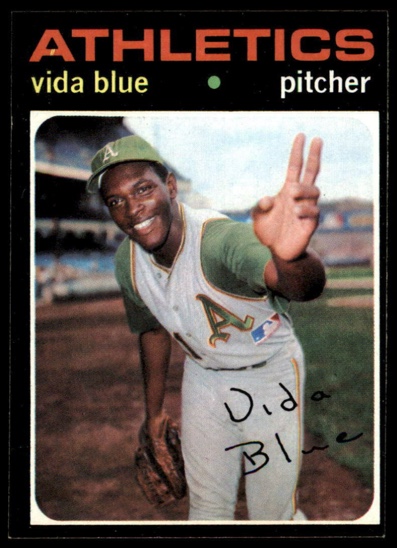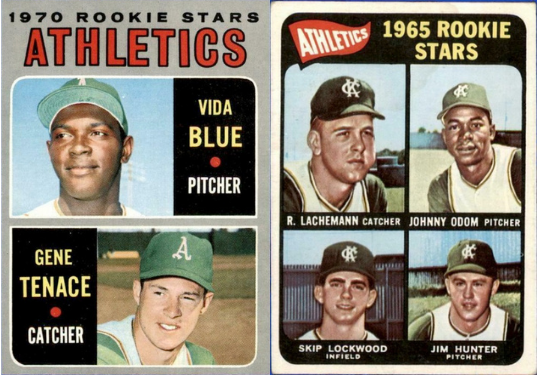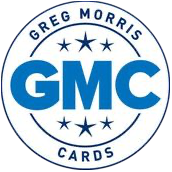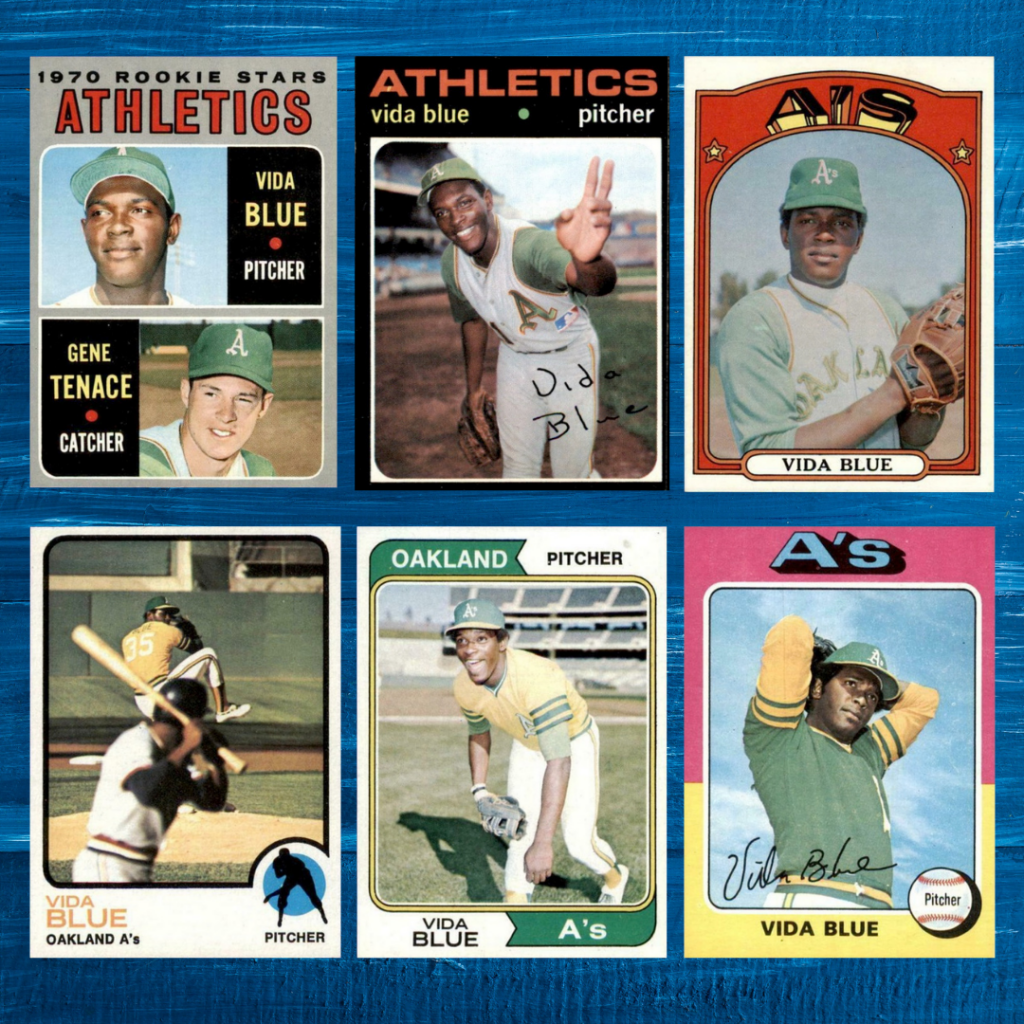When collecting baseball cards of the sport’s greatest pitchers, what makes one pitcher more desirable than another?
Wins, strikeouts, championships, Cy Youngs, MVPs and Hall of Fame candidacy probably top the list of what separates the coveted pitchers from the less coveted ones. It’s what makes Nolan Ryan, Tom Seaver, and Sandy Koufax more collectable than Carl Erskine, Bill Singer, and Jim Perry. It’s also what makes them more expensive.
With that in mind, some pitchers have seemingly been ignored by collectors for one reason or another. Over the years, their value in the card market has dipped below their perceived value on the baseball diamond during their playing days. Despite their numerous accolades and accomplishments in their career, their cards, even their rookie cards, can be found for relatively cheap.
One such example is Vida Blue.
Vida Blue was a left-handed power pitcher for the Oakland Athletics, San Francisco Giants, and Kansas City Royals in the 1970’s and 1980’s. He won 209 games in 17 years, a modest amount for sure, but he is most known for his role in winning three championships with the A’s between 1972 and 1974.
After winning the Cy Young and MVP in 1971 as a 21-year-old, Blue was a dominant force for the A’s during their three-year championship run. He was the third member of a dangerous starting rotation, accompanying Jim “Catfish” Hunter and Ken Holtzman. As a threesome, Hunter, Holtzman and Blue were as dominant a top three as you could find in the 1970’s.
Blue was most known for his overpowering fastball, something that many left-handed pitchers did not possess. He frequently touched 98 mph or more on his heater. It’s what helped him finish with 2,175 strikeouts in his career.

Over his career, Blue finished with at least 10 wins in a season 11 times and at least 20 wins in a season four times. After leaving Oakland for San Francisco, and then Kansas City after that, Blue was not as fortunate in the win column, something that may have hurt his Hall of Fame chances.
Collecting just over 200 wins and striking out over 2,000 batters is a career any pitcher would love to have. But unfortunately, it just isn’t Hall of Fame worthy. His 44.9 career WAR, a statistic very reliable for predicting Hall of Fame candidacy, ranks 139th all time. Most players need a minimum of 50 WAR to be considered for the Hall.
Vida Blue was an incredible young pitcher for a popular baseball team for a number of years and has a trophy case full of accomplishments. But he’s not in the Hall of Fame.
Perhaps that is why you can find his rookie card from 1970 Topps for right around $20 in near mint condition.

Again, Blue has a Cy Young, an MVP, three World Series rings, over 200 wins, and over 2,000 strikeouts.
Only $20 for his rookie card in good condition?
The under valuing of Vida Blue also extends to graded versions of his rookie card. Over the last 12 months, a PSA 8 copy of Blue’s 1970 Topps #21 has averaged $206. The most recent sale was in August, when one sold on eBay for $158.
Let’s compare that to another pitcher who won over 200 games and multiple World Series championships in the 1970’s… Blue’s teammate Catfish Hunter.
Hunter’s rookie card, 1965 Topps #526, sells for considerably higher than Vida Blue’s. PSA 8 copies of Hunter have averaged $331 over the last 12 months. The most recent sale was in August, when one sold on eBay for $304.
Hunter and Blue had very similar careers on paper. They had comparable numbers in wins (224 vs 209), strikeouts (2,012 vs. 2,175), Cy Youngs (one each), and years played (15 vs 17). Blue finished with more MVPs (one) and Hunter finished with more World Series rings (5).

And, of course, Hunter made it into the Hall of Fame in 1987, which is probably the main reason his card values are higher than Blue’s. For what it’s worth, Hunter’s Hall induction is most likely due to his postseason career, where he won nine games in the playoffs over seven years, including five wins in nine World Series starts.
Vida Blue did not fare as well as Hunter in his post-Oakland career. While playing for the Giants and Royals between 1978 and 1986, Blue never pitched in the postseason again. Perhaps if he’d gone to the Yankees or Dodgers, he could have finished with the same number of World Series championships as Hunter. Then maybe his rookie card would hold more value.
But for baseball card collectors, value is king. If you can find popular baseball stars for pennies on the dollar, your collection benefits.
And if you want your collection to accurately reflect the most dominant pitchers of the 1970’s, look to add Vida Blue’s 1970 Topps #21 to the mix.

